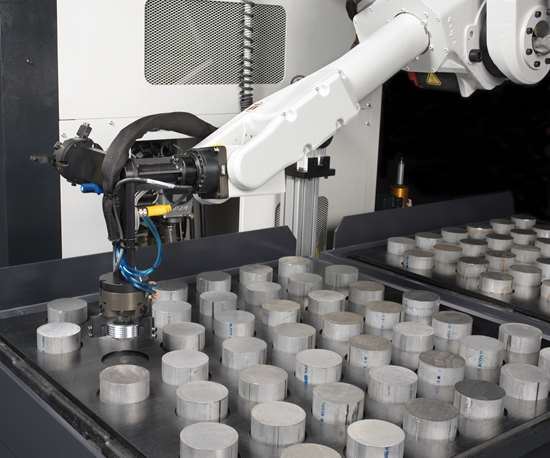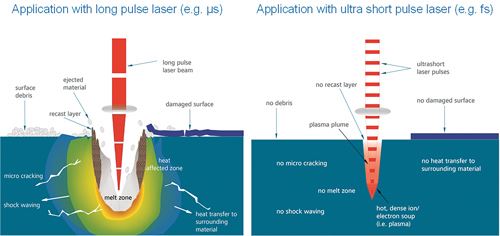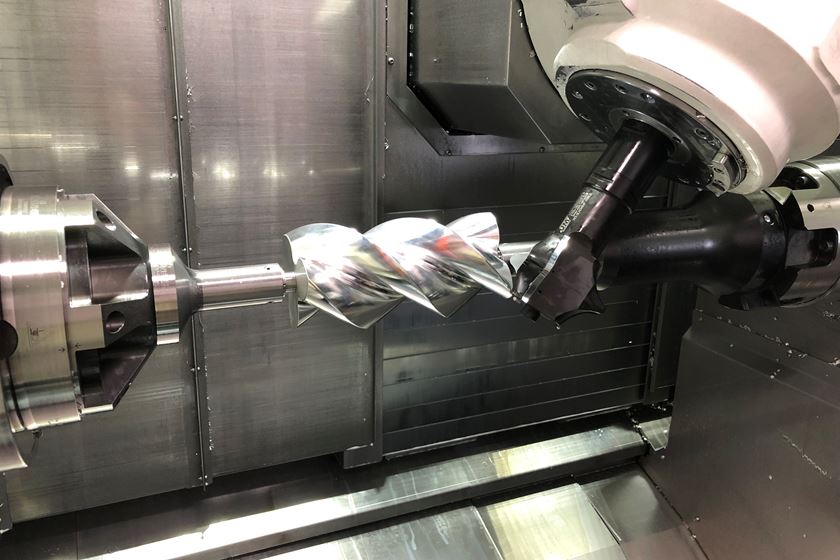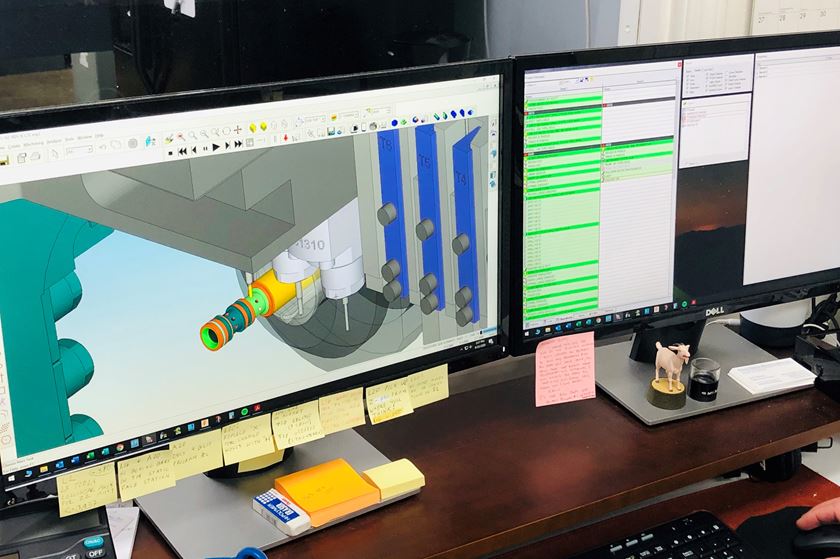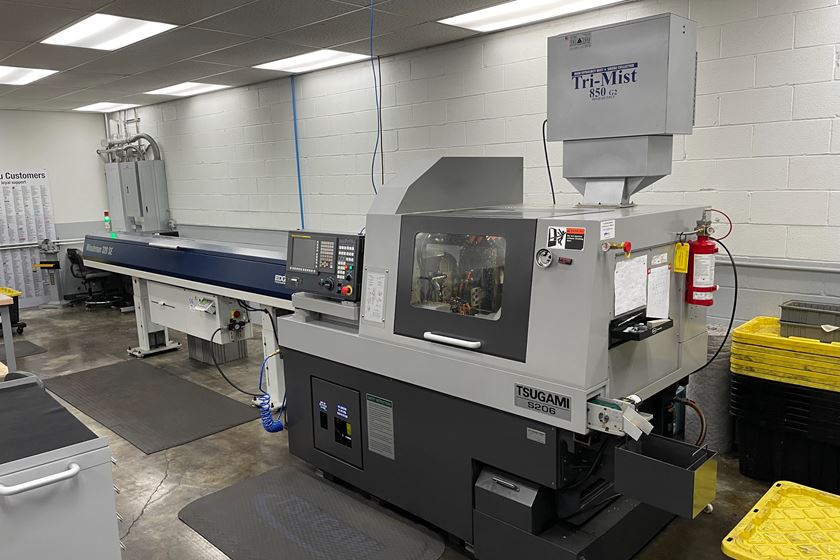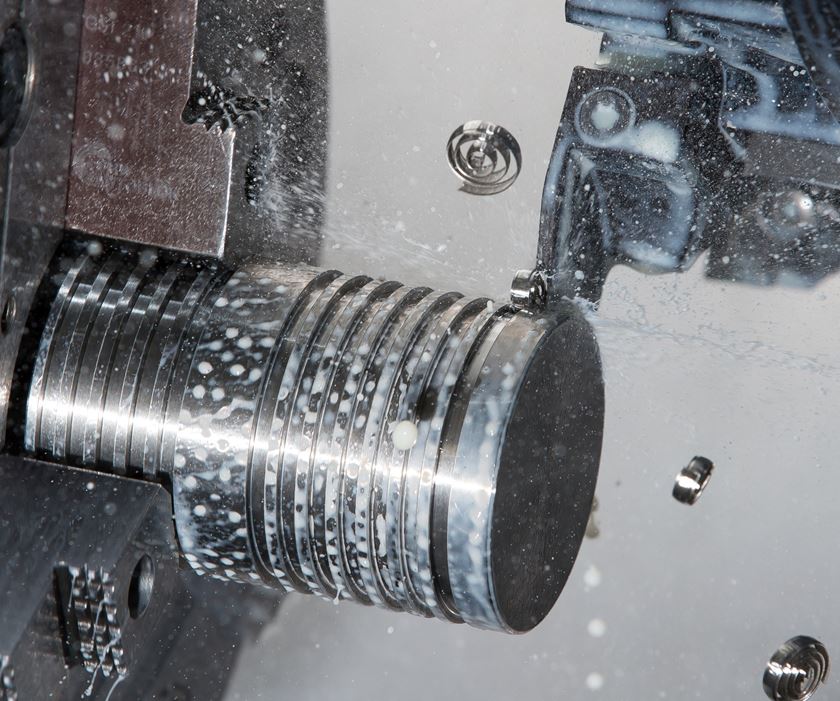Abrasive Waterjet Helps Make Composites Affordable for Boeing
Boeing overcame fixture costs and other challenges of machining large composite parts by opting for waterjet instead of milling.
The Challenge
On the Boeing 777, the applications of composites include the horizontal stabilizers and vertical fin. Manufacturing these large structural components from composites presented several challenges. The horizontal stabilizers of the 777 nearly equal the area of the 737 wing.
Boeing historically used 5-axis routers to machine composites with fixtures holding the parts in place. Since each skin part had its own unique contour, Boeing built a separate fixture for trimming each part.
Featured Content
The extensive fixturing was required because of the substantial mechanical force exerted on the part by the router. Mechanical cutters cause the composite edges to fray, increasing manufacturing cost and slowing production.
Manufacturers encounter numerous other problems when machining composites with routers. These problems include: slow cutting speeds, cuts typically requiring two to three passes to complete, rough edges that require secondary operations to achieve a quality finished edge and excessive amounts of dust and noise generated by the machinery.
The Solution
Boeing chose to machine the graphite/epoxy parts with an ultra-high-pressure abrasive waterjet system manufactured by Flow International Corporation.
Flow's technology uses an ultra-high-pressure intensifier pump that pressurizes water up to 87,000 psi and forces it out through a small nozzle, typically between 0.003 inches and 0.014 inches in diameter. This creates a high velocity waterjet at speeds up to 3,000 feet per second. The patented “Paser” system entrains garnet abrasive into the waterjet stream.
The system Boeing selected is a 6-axis gantry robot powered by a 20XWD dual intensifier pump and a specially designed Paser cutting head. The work envelope of this system measures 50 feet by 8 feet by 3 feet in the X-, Y- and Z-axis respectively.
The Results
Abrasive waterjet machining has proven to be an excellent tool for cutting composite materials at Boeing. As a non-contact cutting technique, abrasive waterjet minimizes mechanical forces on the parts. The absence of these mechanical forces has kept Boeing's fixturing requirements to a minimum.
Boeing achieved a tremendous amount of cost savings through the elimination of tooling and reduced setup time. The abrasive waterjet's adjustable Z-axis enables Boeing to cut six different skin panels and six different spars with one machine, using one universal fixture to hold the parts.
Other benefits Boeing realized include a safer work environment due to the elimination of airborne dust and reduction of noise, faster production and higher quality parts due to improved accuracy and better finished edge quality.
Flow's Paser ultra-high-pressure abrasive waterjet systems boost productivity and reduce tooling costs for composite manufacturers. Abrasive waterjet cutting eliminates many of the problems inherent with traditional methods of machining composites such as reacting mechanical forces, edge delamination and airborne dust.
Benefits
■ Elimination of airborne dust, because the supersonic waterjet stream pulls the kerf material into a catcher located below the cutting table
■ Reduction in noise as compared to a router
■提高切削速度
■ Higher-quality parts, because abrasive waterjet cuts in one pass, leaving material composition and microstructure undisturbed
■ Improved accuracy
■ Omni-directional shapecutting capabilities, including inside corners with 0.020 inch radius
■ Finished edge quality, so that secondary finishing is unnecessary
■ Minimized tooling
Related Applications
Abrasive waterjets cut ceramics, composites, metal matrix composites and metals such as titanium, Inconel, aluminum and stainless steel. Other applications for abrasive waterjet machining of composites include recreational equipment and automotive components.
RELATED CONTENT
Consistency with Indirect Extrusion
A return to basics, paired with extensive research, proved instrumental in the enhancements of this aluminum rod and bar manufacturer’s product line.
Advances in Swiss-Type Technology
R&D efforts in recent years have led to higher efficiencies, increased agility and expanded capabilities for shops performing Swiss-type turning.
Cutting a Micron at a Time
当任务是消除small amounts of material, this process may be the answer.







